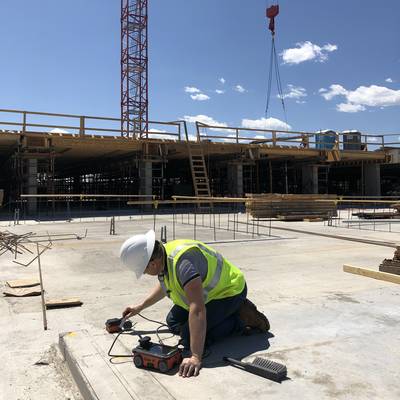Concrete Scanning: A Critical Step In The Direction Of Making Certain Architectural Stability and Safety
In the realm of building and construction and framework upkeep, the significance of concrete scanning can not be overstated. This precise procedure holds the key to revealing prospective threats hidden under the surface area of seemingly solid frameworks. By utilizing sophisticated technology and techniques, concrete scanning acts as a critical tool in making certain that the honesty and security of buildings and bridges are supported to the highest possible criteria. Nevertheless, beyond its surface-level implications, the duty of concrete scanning expands much deeper than fulfills the eye.
Importance of Concrete Scanning
Concrete scanning plays a vital function in ensuring the structural honesty and safety and security of structures and facilities projects. By making use of sophisticated innovations such as ground-penetrating radar (GPR) and electro-magnetic induction, experts can non-destructively inspect concrete structures to identify prospective defects, gaps, embedded things, and reinforcement format. This process enables very early discovery of abnormalities that might compromise the stability of a structure, preventing expensive damages and guaranteeing the safety and security of owners.
Before drilling, cutting, or coring right into concrete, scanning helps identify the exact areas of rebar, post-tension wires, and other embedded aspects, minimizing the danger of unexpected hits that could lead to architectural weak points. Furthermore, concrete scanning aids in quality control by verifying the thickness of concrete covers and finding any kind of disparities that might impact the overall longevity of the framework.
Innovation for Concrete Evaluation

Advantages of Early Detection
Prompt detection of architectural issues can considerably minimize dangers and guarantee the longevity of building tasks. By determining possible troubles early in the building and construction procedure, stakeholders can take proactive actions to attend to concerns before they intensify into bigger and extra pricey issues. One of the essential benefits of early discovery is the avoidance of architectural failures, which can present significant safety and security hazards and cause job delays top article and economic losses.
In addition, very early discovery enables timely repair work and maintenance, which can assist expand the life-span of the structure. By dealing with issues without delay, building and construction teams can prevent expensive repair work and even the need for early substitute of structural components. This positive approach not just saves time and money yet also improves the total safety and toughness of the construction job.
Additionally, very early detection can enhance project preparation and decision-making by offering stakeholders with valuable understandings right into the problem of the framework. Equipped with this info, project managers can make informed choices pertaining to building and construction materials, approaches, and timelines, bring about extra reliable and effective job end results.
Making Sure Architectural Stability
Making sure the architectural stability of a building project is vital to its safety and long life. Architectural stability describes the capacity of a structure or framework to preserve its type and function under different loads and ecological problems. To accomplish this, complete analysis and tracking of the structure are crucial. Concrete scanning plays an important function in ensuring structural stability by discovering potential problems such as voids, delamination, or support rust that might compromise the honesty of the framework over time.
By using sophisticated scanning technologies like ground-penetrating radar (GPR) and electro-magnetic induction, building specialists can non-invasively examine concrete frameworks to determine areas of concern beneath the surface area. This aggressive strategy permits the very early discovery of weak points or problems, allowing punctual repair work or reinforcement to stop architectural failings.
Normal concrete scanning throughout different building and construction phases and throughout the life process of a structure can help maintain its stability, mitigate threats, and make certain the safety and security of owners. By focusing on structural stability through concrete scanning, building and construction projects can boost their strength and toughness, inevitably adding to better safety and security and durability.
Protecting Against Crucial Failings
Implementing routine examinations, such as concrete scanning, can reveal covert flaws like gaps, cracks, or rust that might compromise the stability of a framework. By utilizing sophisticated scanning modern technologies best site like Ground Passing through Radar (GPR) or Concrete X-ray, engineers can non-destructively evaluate the condition of concrete and recognize weak points that require support or repair work.
Conclusion
In final thought, concrete scanning plays a critical role in making sure architectural honesty and safety by using advanced modern technology for early discovery of possible concerns. This proactive strategy helps stop vital failures and guarantees the security of frameworks. It is essential to prioritize concrete evaluation as a common technique to secure the durability and safety of structures and facilities.
Concrete scanning plays an important duty in making certain the architectural integrity and safety and security of structures and infrastructure tasks. Additionally, concrete scanning help in quality control by verifying the density of concrete covers and finding any continue reading this kind of discrepancies that might affect the general durability of the structure. Concrete scanning plays a critical function in making sure structural stability by discovering prospective problems such as gaps, delamination, or reinforcement corrosion that could compromise the honesty of the framework over time.

In verdict, concrete scanning plays a vital function in making sure structural stability and safety by utilizing advanced technology for early detection of prospective problems.